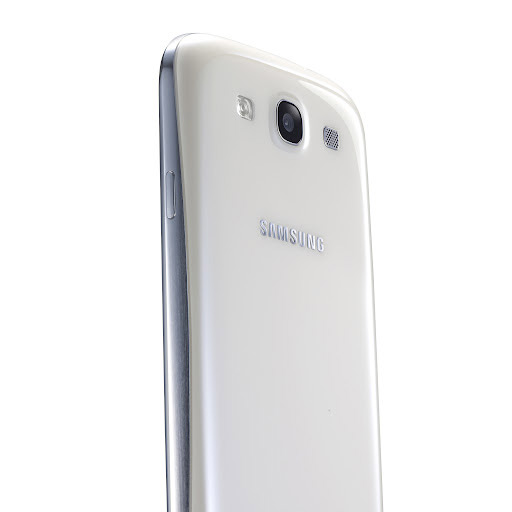Samsung Galaxy S III
OS: Android 4.04 Ice Cream Sandwich
CPU: Quad-core 32nm ARM Cortex A9 1.4 GHz processor, Exynos 4212 Quad chipset
GPU: Mali-400MP
RAM: 1 GB
3G/ HSPA
Screen: 4,8", 4.8" 16M-color HD (720 x 1280 pixels) Super AMOLED capacitive touchscreen, Gorilla Glass
Camera: 8 Megapixel, Full HD video 1920×1080 pixels 30fps
Front Camera: 1.9 Megapixel, video HD
Memory: 16/32/64GB storage, microSD card slot
Wi-Fi n, GPS/ Glonass, Bluetooth 4.0, micro USB, 3.5mm audio jack, FM radio, TV-out, USB-on-the-go, NFC,Wi-Fi hotspot
Batery: 2100 mAh
Dimensions: 136.6×70.6×8.6mm
Weight: 133
The Galaxy S III is Samsung's new flagship smartphone and it's finally broken cover at the company's stand-alone Mobile Unpacked event here in London. With a steady stream of fakes, outright leaks and even event rescheduling, Samsung's claimed almost crazy levels of interest for its new smartphone. Weighing in at 133g (4.7 ounces) and whittled to 8.6mm at its thickest, the rounded-off design has more than a little bit in common with its Galaxy Nexus cousin. Of course, it's Samsung's new 1.4GHz Exynos 4 Quad processor doing the legwork, and there's 1GB of RAM to help it out. The display has been bumped up in size to a 4.8-inch HD Super AMOLED affair, sporting a 1280 x 720 pixel count. Happy snappers will have an 8-megapixel rear shooter to play with, and a 1.9-megapixel eye on the front will take care of those video calls. If you were wondering about radios, it's launching with HSPA+, but there's an LTE version in the cards. As for the interface, it's TouchWiz on top of Android 4.0 again, and there's new gesture functions to help you get around.

In addition to announcing its newest flagship, the Galaxy S III, along with some nifty photo-sharing features, Samsung has just revealed two more human-friendly features that aim to further differentiate the phone on the software side. These include SmartStay, which cleverly keeps the display from timing out by using the front-facing camera to detect when you're looking at the screen. Meanwhile, S Voice ushers in voice commands, and is the closest thing we've seen to a Siri competitor since Apple introduced that feature on the iPhone 4S. And we have to say, though Android users have long been reveling in voice-activated dialing and Google searches, the list of possible use cases here is quite impressive. In addition to initiating calls, you can wake the phone, request songs, capture photos and inquire about the weather. For now, Samsung says this feature will support eight languages, including, among others, Spanish, German, Korean and American / British English. Still, we wouldn't put it past Samsung to teach the GS III a few more languages once it gets that whole "launching in 145 countries" thing out of the way.


Camera
Samsung's Galaxy S III doesn't boast 41-megapixel captures or top-of-the-line optics. Instead, its camera's strengths are in its intelligent organization and social features, increasing the handset's appeal as a point-and-shoot alternative for casual photographers. Samsung's latest round of compacts and mirrorless dedicated snappers reaffirm suspicions that the company is taking a different approach to photography, focusing on connectivity and social enhancements, rather than updated sensor and low-light shooting technologies. While such decisions may prompt advanced shooters to bring their business to competitors, it highlights Samsung's strengths on a broader level, as a connectivity enabler, rather than a camera maker.
The company is clearly committed to growing its ecosystem and uniting product divisions in an effort to increase penetration throughout different categories, developing sharing tools that simplify workflows and increase appeal. Samsung's latest flagship smartphone packs standard specs, like 8-megapixel stills and 1080p video, but it offers a handful of software features that combine to make the device a compelling upgrade, especially from an imaging perspective. Join us past the break as we detail the Galaxy S III's photography enhancements, from Best Photo to Face Zoom.
Shooting enhancements
We don't blame you for not being impressed with the Galaxy's camera itself, but that's not the point -- software enhancements improve the shooting experience without boosting specifications. Both cameras can shoot HD video (the 8-megapixel rear-facing module captures 1080p, while the 1.9-megapixel cam up front records at 720p), and a new feature enables still snaps as you capture clips, with an on-screen shutter button popping up in the top right corner. The S III also offers a burst shooting mode at 6 frames-per-second for up to 20 continuous shots and a new Best Photo mode, which snaps eight consecutive images (also at 6 fps) of the same scene, highlighting the most appealing frame, based on parameters that include sharpness, contrast and the subject's expression. Best Photo allows you to save the pre-selected image, or any of the other frames before discarding.






No comments:
Post a Comment